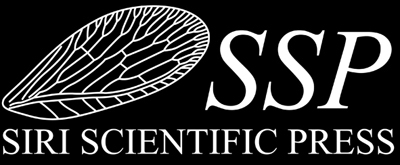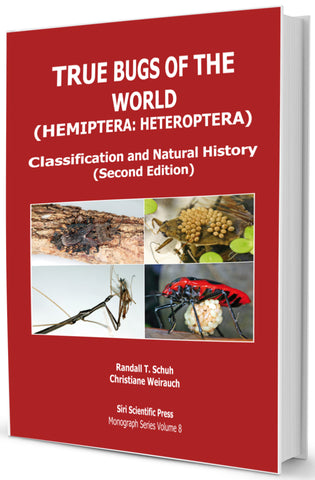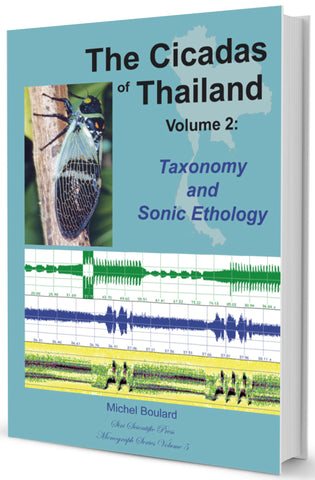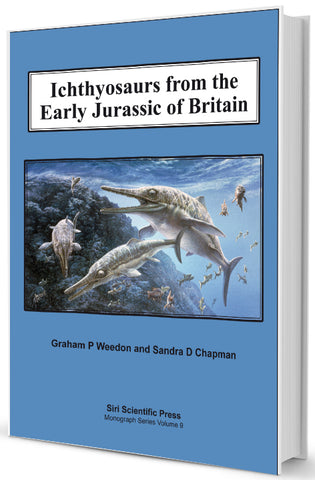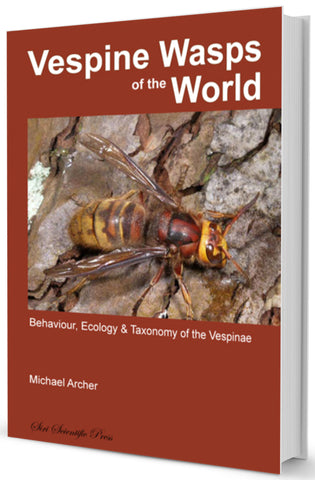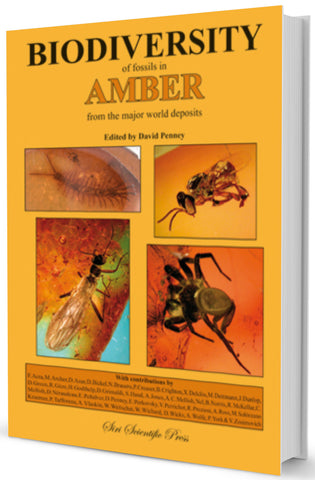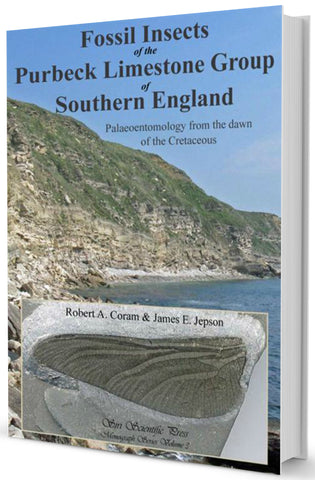
Fossil Insects of the Purbeck Limestone Group of Southern England: Palaeoentomology from the Dawn of the Cretaceous
by Robert A. Coram and James E. Jepson
Siri Scientific Press (2012) 978-0-9567795-3-3 (MONOGRAPH SERIES VOLUME 3) RRP £50.00
144 pp, 240 x 165 mm, hard cover, ca. 230 illustrations
IN STOCK - Ships Within 24 Hours
Reviews
PalAss Newsl. (2012): Drs Rob Coram and James Jepson provide a unique perspective, as viewed through compound eyes, based on two decades of study and revealing an inordinate fondness for insects. This easy to read and well illustrated mini-monograph is an essential palaeontological guide to the semi-arid Jurassic-Cretaceous transition and its immediate aftermath on a basinal and regional scale.
Antenna (2012): Drs Rob Coram and James Jepson bring us right up to date with the entomology and ecology of a lost world examined in the light of modern knowledge and new techniques.
Priscum (2015): Fossil Insects of the Purbeck Limestone Group of Southern England is really the first of its kind: a true field guide for paleoentomology. While others specialize in a locality, and treat the insects as a part of that totality, this book showcases only the insects from the Purbeck in their entirety — not just pretending that the handful of best-preserved species are all there is to see. ... It is a true catalog of the diversity without the complexity of taxonomic quibbles or esoteric prose on a given morphological feature.
The basal Cretaceous Purbeck Limestone Group of southern England is one of the most productive fossil insect deposits in Britain. Thousands of specimens have been collected from exposures in Dorset and Wiltshire, particularly the coastal Purbeck type locality of Durlston Bay. Seventeen orders of insects have been recorded, and several hundred species described, with many still awaiting study. This monograph brings together research which spans over 150 years and provides an up-to-date account of our knowledge of the Purbeck insect fauna. The geological setting of the Purbeck Limestone Group is discussed, along with the palaeoenvironments in which the insects lived and the factors that affected their preservation. A complete annotated and fully referenced systematic list of both described and recorded fossil insects from the Purbeck has been compiled, illustrated with numerous photographs and drawings. A section on palaeoecology gives an insight into how these insects lived, with a detailed examination of both the terrestrial and aquatic environments. Information on habitat preferences, feeding strategies and predator/prey relationships have been interpreted from the fossil insects and other organisms found within these rocks. The utility of the aquatic insects as palaeosalinity indicators is also discussed. This book is a comprehensive guide to an important insect fauna that lived just prior to the radiation of flowering plants and should be of interest to both amateur and professional entomologists and palaeontologists.
We Also Recommend
